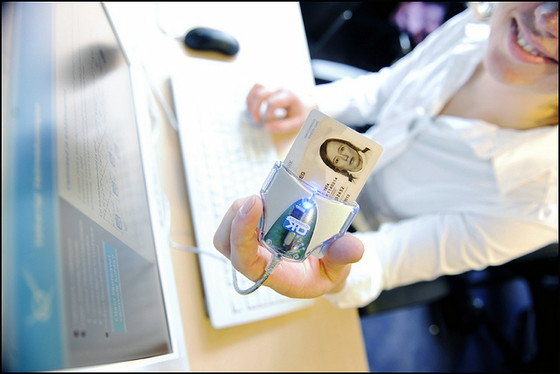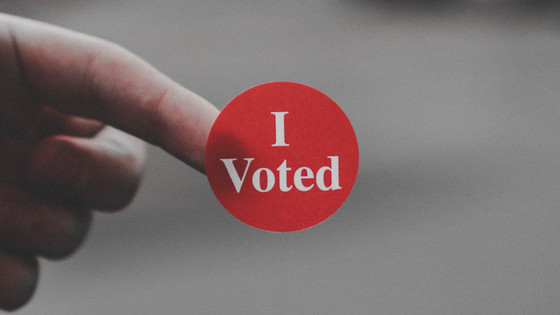How did the election result change in the country that introduced the Internet vote for the first time in the national election?

by Arnaud Jaegers
March 2019, lined up in the south of Finland Baltic States small country located on the most northerly in the Estonian parliamentary election is carried out in the original Ozeki- bunch瑠都 Mr. Kaido-Hoberuson known as became a hot topic ran. In this parliamentary election, voting was possible not only by voting by paper but also by PC and smartphone via the Internet. With countries around the world concerned about transparency and safety concerning the electronic voting system cautiously, in Estonia, which is known as the country that digitized the national election for the first time in the world, the electronic balloting system was actively introduced into the election It is.
Riigikogu elections 2019 Voting and election result
https://rk2019.valimised.ee/en/election-result/election-result.html
Estonia Election: What US Can Learn From Electronic Voting | Time
http://time.com/5541876/estonia-elections-electronic-voting/
The result of Estonia's general election held in March 2019, the opposition party, the Reform Party , won the highest number of 34 seats in 101 seats and became the first party. In the ruling party, the central party, which gathers support from Russian residents mainly, became the second party, with 26 seats reduced, one seat. Also, the conservative People's Party of extreme right party has nearly tripled to 19 seats. Mr. Hobberson who ran from the central party has lost the prize once, but since the winner declined, the winning prize has been fulfilled.
Mayor Passes Maardu #Riigikogu Seat On To #Baruto #Estonia # Valimised2019 Https://T.Co/WqwriAqU5c Pic.Twitter.Com/Nbv7SIPtOj
- Estonian News (@ errnews) March 5, 2019
Estonian News , Estonian Media, argues, "The change in the seats so much is a big boost by electronic balloting." According to Estonian News, the most revealed party, which accounted for 40% of the total when looking at the validity vote by electronic balloting, was the reform party that made the most votes, but the central party did not gather votes, but how conservative people It is said that it was a party. Also, out of the 163,232 votes obtained by the Reform Party, it turned out that about 60% was due to electronic balloting.
In Estonia, an electronic voting system was introduced from the local parliamentary election in 2005, and it became a topic in 2007 that it adopted the electronic voting system for national election for the first time in the world. The Estonian government states that around 30% of the population of 1.3 million people are using the electronic balloting system and can reduce election-related working hours by 11,000 hours at a time.
Estonian citizens can participate in the election anywhere in the world if they have PCs connected to the Internet and Estonia's ID cards. Voters can simply install the voting software downloaded from the election site, enter the numbers and passwords on the ID card, and select the candidates OK. As measures against acquisitions and intimidation, even once voting is done, the system can change the contents of voting within the period.

by European Parliament
Electronic voting systems that manage votes by computers rather than paper and pencil are being studied and introduced not only in Estonia but in various countries. For example, some states in the United States adopt an electronic voting system and are also being operated in parliamentary elections and presidential elections. However, in the presidential election held in 2016, it was reported that problems such as the electronic balloting machine broke down and the calibration of the touch panel was inadequate and it was not possible to vote correctly, occurred frequently.
In addition, in March 2018, an 11-year-old boy demonstrated how to tamper with the Florida online voting site at the event to tamper with the voting number, and questioned the safety of the system. In addition, it was pointed out that a touch panel type electronic voting machine installed at a polling place can also unlock the seal using an aluminum can and hack it. As a result, the opinion that it is "should be prudent to the electronic balloting system" in the United States is strengthening.
11-year-old boy hacks the web voting system of the state's election in the United States, successfully tampering with voting results in only 10 minutes - GIGAZINE

Even in the electronic voting system operated in Estonia, the safety and reliability problems are pointed out. In the 2007 National Assembly election in which the Estonian government introduced online voting for national election for the first time, the online voting system suffered from DDoS attacks and a large system failure occurred. The suspicion that neighboring Russia is involved in this attack was reported, but Russia has denied involvement.
What is the vulnerability of Estonia's electronic voting system linked to cyber attacks? - GIGAZINE

Alex Halderman, who studies cyber security at the University of Michigan, said, "Operational security is ambiguous, countermeasures against anonymity lead to inadequate identification and software design is very vulnerable to foreign attacks "Estonia's electronic balloting system blindly trusts election servers and voter computers, both of which are attractive targets for national-level attackers such as Russia I guess. "

Photo by Parker Johnson
Estonia's election management committee denied concern of these experts and commented that "there were not cases that would affect confidentiality or safety of the voting process for more than 10 years," and the election system is regular It is argued that it is being updated in a similar way. Regarding fear of anonymity to the use of the ID card, "Since the identity of the voter is deleted from the voting information before the vote is confirmed and sent to the election management committee, anonymity can be secured "I said.
Related Posts:
in Note, Web Service, Posted by log1i_yk






